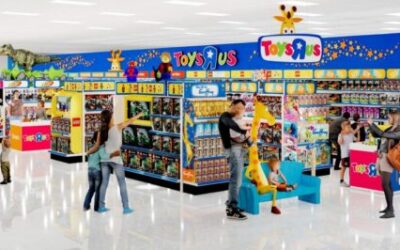The Rise of Micro Markets in Airports


The travel and tourism industry went through a shock in 2020, with the COVID-19 pandemic leading to a decrease in passenger traffic and significant economic challenges for airports. However, with the industry’s gradual recovery, airports are starting to face new, more logistical challenges. Passenger numbers are on the rise and becoming more stable but are still unpredictable. This, combined with workforce shortages, has caused airports to move more toward automation, with self-service check-in kiosks, baggage drops and mini stores.
According to SITA, by 2024 88% of airports are expected to be equipped with check-in kiosks and 59% will have automated border control. This trend is driven both by worker shortages and by the cost-effectiveness of this business model. Consumers are also becoming more exposed to self-checkout options, and they are in turn becoming more normalized and natural.
The growing exposure of travelers to self-service options has led to consumers preferring them as they are much more convenient than previous models. Instead of standing in long lines to speak to a check-in counter staff member, passengers can simply walk up to the next available kiosk. Because these kiosks are small and automated, many more kiosks can be implemented, helping speed up check-in time and taking away a lot of the friction often associated with airport travel. Having more kiosks for customers to check in at also allows staff to be more flexible. They are no longer stuck behind the counter but can walk around and assist those who need help.
Self-service can also be used in environments other than the check-in process. Micro markets are one of the key self-service options that are becoming increasingly popular in airports. These self-service retail spaces offer a wide range of food and beverage options, including healthy options, and provide travelers with a convenient way to purchase snacks and other items on the go.
Micro markets also offer simple and secure payment options, allowing tourists to pay with their credit card and not have to worry about taking out or exchanging cash. While airports are “public spaces” and micro markets have traditionally been in “closed environments,” the risk of shrinkage outweighs the cost of employee overhead, and since people have already been through security this provides a perception of oversight.
Micro markets often come with management software that can help airport employees in the food and beverage industry increase productivity and optimize operations. Features such as inventory management and the ability to track sales allow operators to keep track of which items sell better than others.
This information can be of great value when deciding which products to order and what price to sell them at. Understanding what customers want helps improve their overall experience. The inventory management features also help operators track any theft. Additional precautions can also be taken, such as extra signage and messaging or limited staff working around the space to discourage theft.
Micro market product variety is not the only thing that greatly improves the customer experience. With shorter lines, intuitive processes and fewer language and currency barriers, travelers are happy for the trend to continue. Micro markets can also be open 24/7, giving travelers access to food, beverages and other goods they may need even if other commercial areas are not open.
In addition to providing micro markets for tourists and passengers, airports have also started offering these services to employees in their breakrooms. They provide workers with closed-loop value cards that they can top up and use on-site, allowing employees to redeem their daily meal voucher at a convenient and accessible place. This form of welfare helps boost employee satisfaction.
In conclusion, the rise of automation and self-service options in airports is a response to the challenges faced by the travel and tourism industry and is expected to continue to grow in the coming years. Micro markets are one of the key self-service options that are becoming increasingly popular in airports, providing travelers with a convenient way to purchase snacks and other items on the go, while also offering simple and secure payment options. As the industry continues to recover and grow, we can expect to see more airports embracing the convenience and cost-effectiveness of self-service options like micro markets.
As the North American CEO of Nayax, Carly Furman is the force behind its transformation into a leading provider of cashless payment solutions in North America. She has been overseeing all operations in the North American Market for over five years. Before relocating to Hunt Valley, Md. in 2016 to establish the North American office, Furman worked at Nayax’s R&D Headquarters in Israel where she was the CFO of all of Nayax’s subsidiary companies. In recognition of her accomplishments, in 2021 Furman won a 40 under 40 award from Automatic Merchandiser. She has a BA degree in Economics with an emphasis on Accounting from the University of California Santa Barbara and is a registered CPA. Prior to joining the Nayax family, Furman worked in public accounting and corporate finance, focusing on the biotech, fintech, and real estate sectors.











